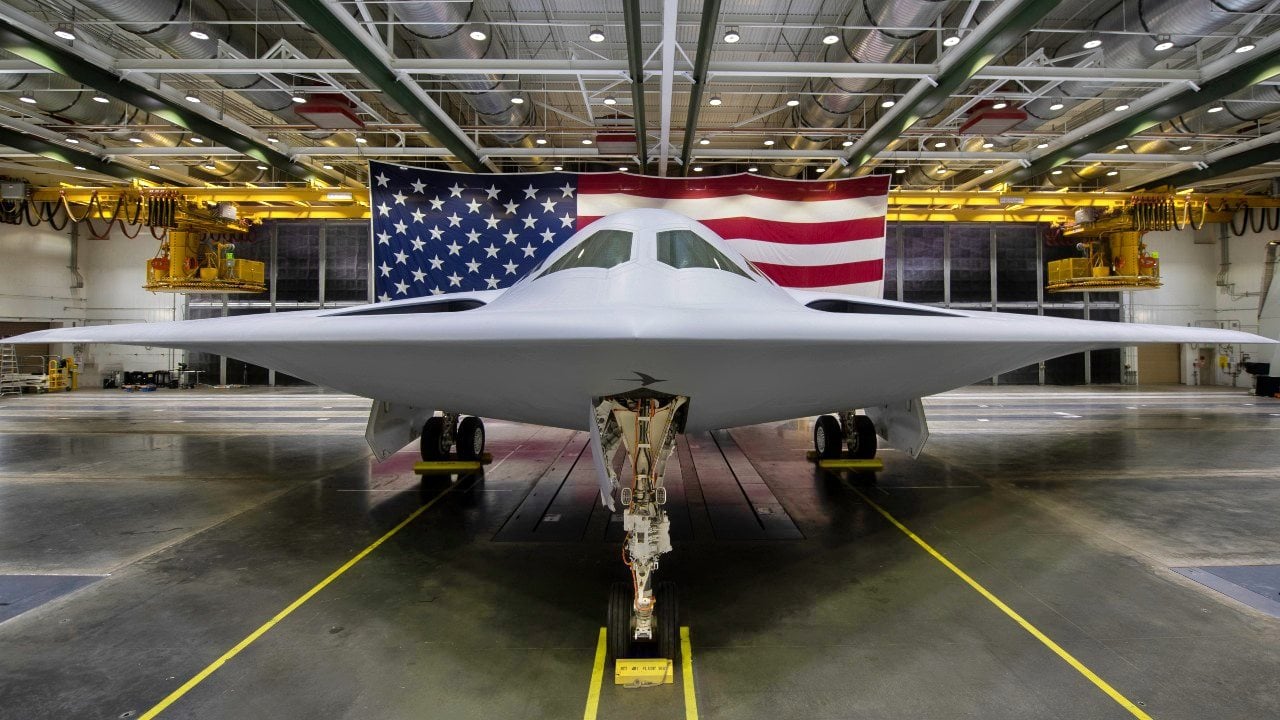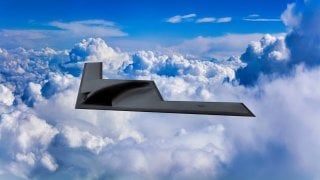B-21 Raider Bomber 'Nightmare' Just Smacked the Air Force in the Face
The U.S. Air Force is developing the B-21 Raider, a next-generation stealth bomber designed to maintain America’s air superiority. However, despite the Raider's advanced capabilities, concerns arise over the limited production of only 100 units.
Summary and Key Points: The U.S. Air Force is developing the B-21 Raider, a next-generation stealth bomber designed to maintain America’s air superiority. However, despite the Raider's advanced capabilities, concerns arise over the limited production of only 100 units.
-Analysts, including airpower expert Christopher Bowie, argue that a fleet of 100 bombers may be insufficient to meet the demands of a potential conflict with China, where a larger fleet would be crucial.
-The high costs of the B-21 program, alongside other defense priorities, have limited expansion. However, prioritizing the B-21 ensures U.S. dominance in future air warfare.
Is 100 B-21 Raiders Enough? Experts Warn of Potential Shortfall in U.S. Bomber Fleet
The U.S. Air Force has long flown the world’s best fleet of bombers. But there is real competition when it comes to the latest generation of stealth bombers. China and Russia are working on their H-20 and PAK-DA airframes, respectively. On the U.S. side, Northrop Grumman is developing the Air Force’s B-21 Raider long-range stealth bomber. The Pentagon is confident that this new platform will be without match when it is introduced. But some analysts are concerned that even if the stealth bomber maintains the Air Force’s technological dominance, not enough of the Raiders will be built.
The Air Force currently plans to produce about 100 of the B-21 bombers. Author and airpower analyst Christopher Bowie asserts that, “We should plan to build more than the 100 currently on the books. No matter how capable an aircraft, it can only be in one place at one time. The B-21 will be asked to do so much in a conventional war that if there is a threat the conflict will go nuclear, this would generate significant dilemmas for our nation’s leaders.”
Bowie asked, “Do you pull aircraft out of the theater to bolster our nuclear deterrent posture? Or do you degrade the triad in order to increase operational tempo in conventional operations?”
Experts like Bowie insist the Air Force probably needs closer to 300 bombers to engage China in a potential war. Considering the current number of B-1B Lancers, B-2 Spirits and B-52 Stratofortresses in service today, the service would need to field at least 140 Raiders in order to meet this need.
Introducing the B-21 Raider
Named to honor the men who took part in the Doolittle Raid on Tokyo in 1942, the B-21 Raider is the part of the U.S. Department of Defense’s efforts to modernize America’s nuclear triad. The Raider was born out of the Air Force’s Long Range Strike Bomber program, which commenced in 2011. Northrop Grumman beat Lockheed Martin and Boeing for the contract to build the next-generation stealth bomber.

Conceptualized as an all-in-one battle manager, intelligence-collection platform, and interceptor aircraft, the Raider is fully expected to be the best aircraft of its kind when it is introduced.
Half a dozen B-21 bombers entered the construction phase in early 2022. In December that year, Northrop Grumman unveiled the platform at its production facilities in Palmdale, California. While little information was released surrounding the program’s specs and capabilities, the aircraft displayed in 2022 appeared smaller than its Spirit predecessor, indicating a stealthier platform even more capable of evading enemy detection. Additionally, Northrop CEO Kathy Warden revealed that the bomber is designed with modular, open-systems architecture to enable smoother upgrades as new technologies emerge. This capability mirrors the data link connectivity featured on the fifth-generation F-35 Joint Strike Fighter.
Why Only 100 Raiders?
Considering the B-21’s purported capabilities, the Air Force should acquire more than 100 of these airframes. However, high costs are limiting development. At the same time, the Air Force is looking to field its Next Generation Air Dominance sixth-generation fighter platform. Both these programs are very expensive.
Even with these exorbitant costs in mind, the B-21 stealth bomber program should be prioritized. The Raider may very well be technologically more capable than China’s H-20 once they are both introduced. This will matter much less if Beijing fields three times as many bombers as Washington.
About the Author: Maya Carlin
Maya Carlin, National Security Writer with The National Interest, is an analyst with the Center for Security Policy and a former Anna Sobol Levy Fellow at IDC Herzliya in Israel. She has by-lines in many publications, including The National Interest, Jerusalem Post, and Times of Israel. You can follow her on Twitter: @MayaCarlin.
Image Credit: Creative Commons.


